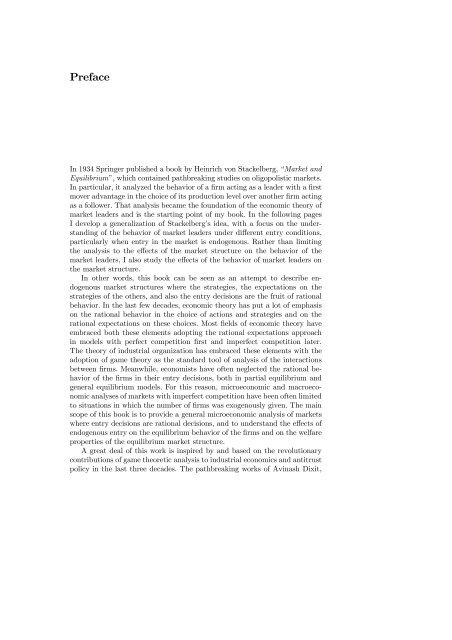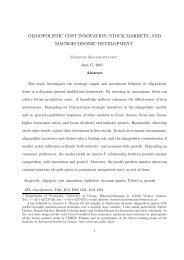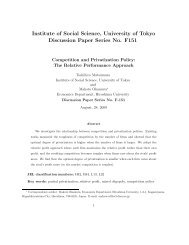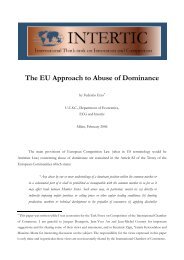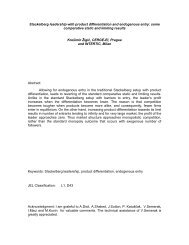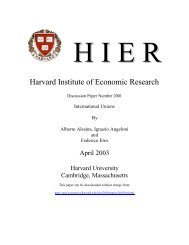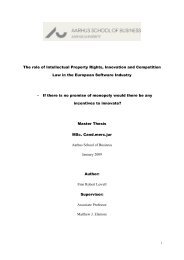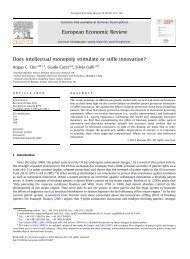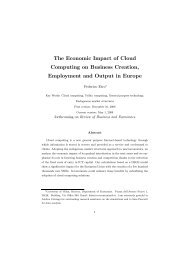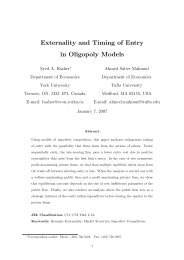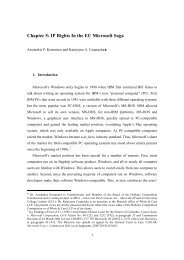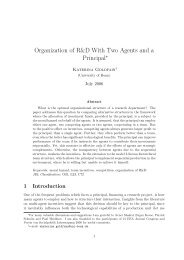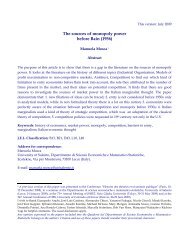Competition, Innovation, and Antitrust. A Theory of Market ... - Intertic
Competition, Innovation, and Antitrust. A Theory of Market ... - Intertic
Competition, Innovation, and Antitrust. A Theory of Market ... - Intertic
You also want an ePaper? Increase the reach of your titles
YUMPU automatically turns print PDFs into web optimized ePapers that Google loves.
Preface<br />
In 1934 Springer published a book by Heinrich von Stackelberg, “<strong>Market</strong> <strong>and</strong><br />
Equilibrium”, which contained pathbreaking studies on oligopolistic markets.<br />
In particular, it analyzed the behavior <strong>of</strong> a firm acting as a leader with a first<br />
mover advantage in the choice <strong>of</strong> its production level over another firm acting<br />
as a follower. That analysis became the foundation <strong>of</strong> the economic theory <strong>of</strong><br />
market leaders <strong>and</strong> is the starting point <strong>of</strong> my book. In the following pages<br />
I develop a generalization <strong>of</strong> Stackelberg’s idea, with a focus on the underst<strong>and</strong>ing<br />
<strong>of</strong> the behavior <strong>of</strong> market leaders under different entry conditions,<br />
particularly when entry in the market is endogenous. Rather than limiting<br />
the analysis to the effects <strong>of</strong> the market structure on the behavior <strong>of</strong> the<br />
market leaders, I also study the effects <strong>of</strong> the behavior <strong>of</strong> market leaders on<br />
the market structure.<br />
In other words, this book can be seen as an attempt to describe endogenous<br />
market structures where the strategies, the expectations on the<br />
strategies <strong>of</strong> the others, <strong>and</strong> also the entry decisions are the fruit <strong>of</strong> rational<br />
behavior. In the last few decades, economic theory has put a lot <strong>of</strong> emphasis<br />
on the rational behavior in the choice <strong>of</strong> actions <strong>and</strong> strategies <strong>and</strong> on the<br />
rational expectations on these choices. Most fields <strong>of</strong> economic theory have<br />
embraced both these elements adopting the rational expectations approach<br />
in models with perfect competition first <strong>and</strong> imperfect competition later.<br />
The theory <strong>of</strong> industrial organization has embraced these elements with the<br />
adoption <strong>of</strong> game theory as the st<strong>and</strong>ard tool <strong>of</strong> analysis <strong>of</strong> the interactions<br />
between firms. Meanwhile, economists have <strong>of</strong>ten neglected the rational behavior<br />
<strong>of</strong> the firms in their entry decisions, both in partial equilibrium <strong>and</strong><br />
general equilibrium models. For this reason, microeconomic <strong>and</strong> macroeconomic<br />
analyses <strong>of</strong> markets with imperfect competition have been <strong>of</strong>ten limited<br />
to situations in which the number <strong>of</strong> firms was exogenously given. The main<br />
scope <strong>of</strong> this book is to provide a general microeconomic analysis <strong>of</strong> markets<br />
where entry decisions are rational decisions, <strong>and</strong> to underst<strong>and</strong> the effects <strong>of</strong><br />
endogenous entry on the equilibrium behavior <strong>of</strong> the firms <strong>and</strong> on the welfare<br />
properties <strong>of</strong> the equilibrium market structure.<br />
A great deal <strong>of</strong> this work is inspired by <strong>and</strong> based on the revolutionary<br />
contributions <strong>of</strong> game theoretic analysis to industrial economics <strong>and</strong> antitrust<br />
policy in the last three decades. The pathbreaking works <strong>of</strong> Avinash Dixit,


